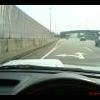Search the Community
Showing results for tags 'lancia fulvia'.
-
One fine Saturday afternoon as I was driving a Perodua Myvi down a steep road which banked towards the right I got quite a surprise. A Hyundai Atoz suddenly appeared out of nowhere. 'Nowhere' in this context meant that it appeared after it was hidden behind the A-pillar as well as the large elephant-like driver's side mirror. It was the angle the Perodua was sitting on the road that enabled the tinier Atoz to simply disappear behind the two items mentioned above. And it got me thinking. Have the A-pillars and the side mirrors of cars gotten thicker over the years? A-pillars are what you see to the left and right of the windscreen and is a very integral part of the car's sturcture. It holds the windscreen up, it also ensure structural integrity of most cars even in convertibles and it is also part of the car's silhouette. You can't draw a modern day car without having A-pillars. And speaking about modern A-pillars, as it is part of the car's monocoque chassis, it needs to be strong enough during a crash. Which is why you do not see cars these days with slender A-pillars like the BMW CSL from the 1970s or even the classic Lancia Fulvia (photo above) of the same period. Modern side mirrors have also grown in size. Cars in the good old days have it reasonable small. Some of you may remember side mirrors located on the wings of some cars from the 1970s and early 1980s. They were small. About the size of a man's fist or the size of some motorcycle rear view mirrors. But this isn't true anymore for cars. They are huge and can hide tiny Hyundai Atozes behind them especially when you add modern slightly thicker A-pillars to them. You would never find such a problem in the interior of a 1981 Honda Civic pictured below. Then you check out the photograph of the VW Scirocco's A-pillar after it. Taken with the same camera and with yours truly in my usual driving position. The newer car has double the size of the A-pillar and when you're sitting in a low slung coupe, it seems slightly worse (but in all honesty, the Roc is a nice place to be in). And now, the biggest pain are those cars with two A-pillars. Cars like the Honda Jazz, Honda Civic, Suzuki SX4 and the Peugeot 308 (the first photograph below). The former two seem to be quite alright when it comes to looking out of them, but the latter two aren't as good. They've created huge blindspots in places which were never blindspots previously. Soon we may be hearing "I'm sorry officer. I wasn't aware of that 20ton lorry as it was hiding behind my car's A-pillar." Sometimes, progress develops new problems. - A 1990 Mercedes Benz 200e W124 with its slender A-pillar and smallish side mirror. And it is a strong and solid car with great visibility. Who says A-pillars have to be thick? - The Subaru Impreza is a good example where high tensile steel is used, making it have a relatively slim A-pillar for a post-2000 car.
